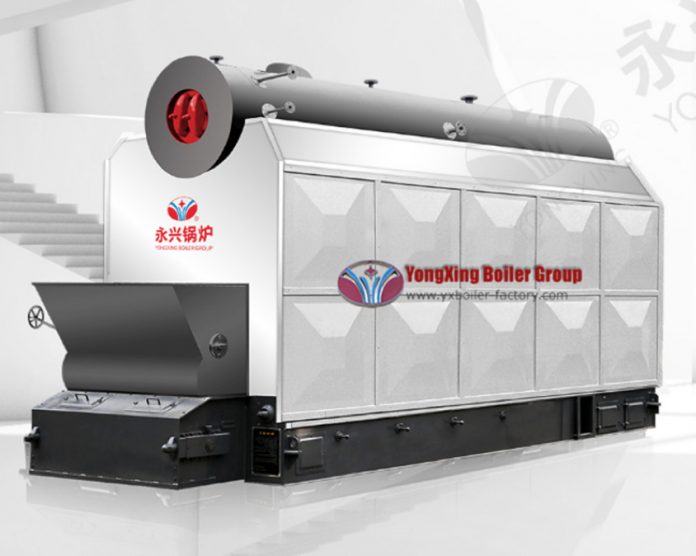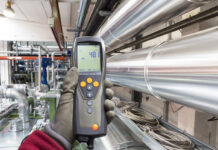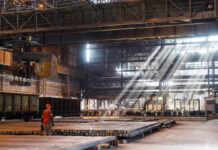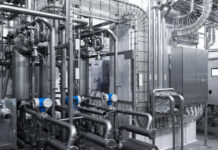To select from the many kinds of wood-burning steam boilers accessible, one must first understand how they are constructed and operate.
What is Wood Fired Steam Boiler?
A steam boiler, also known as a steam generator, is a device that generates steam by applying heat energy to water. On the other hand, wood-fired steam boilers use wood as a fuel to generate heat energy. Although the definitions are somewhat ambiguous, previous steam generators were frequently referred to as boilers and operated at low to medium pressure (7–2,000 kPa or 1–290 psi). Still, it is more typical to refer to a steam generator at pressures above this.
Industrial Wood Fired Steam Boiler Design
Modern wood fired steam boiler design offers several benefits. There are various advantages to using a current wood-fired steam boiler. In the past, faulty boiler design has resulted in explosions, resulting in loss of life and property. Modern techniques make an effort to avoid such blunders. Furthermore, mathematical modelling can predict how much space a boiler will require and the materials utilized. After determining the design specifications of a boiler, design engineers can estimate the cost and schedule for construction.
Boiler design can be based on the following criteria:
- The maximum amount of steam produced with most minor fuel consumption
- Minimal operator attention is required during the operation
- Capability for quick starting
- Economic feasibility of installation
- Compliance with safety regulations
- The boiler’s material will be determined by the quality of the raw water, which will decide how hard or soft the water is.
- The heat source is either the fuel to be burned and its ash properties or the process material from which the heat is recovered.
- Capacity/steam output is necessary, commonly measured in tons per hour or kilogrammes per second.
- Pressure, temperature, and other properties of steam
- Considerations for safety
- Mechanical limitations
- Cost constraints
- The monetary cost
- When utilizing any connecting procedure, the material’s tensile strength must be taken into account.
Types of Wood Fired Boilers
A wood-fired steam generator varies according to the type of fuel it uses. It may be a wood pellet fired steam boiler.
In terms of unit energy costs, replacing oil-fired boilers and gas-fired boilers with wood pellets has economic and environmental advantages. It runs on wood pellets as fuel. It is a steam boiler with high efficiency.
A vertical boiler is a form of fire-tube or water-tube boiler in which the boiler barrel is placed vertically rather than horizontally. Vertical boilers were employed in many steam-powered vehicles and mobile machinery, including early steam locomotives. There are available vertical fired boilers for sale.
There could also be woodchip fired steam boilers, and wood log fired steam boilers. These are also efficient steam boilers. But the selection of the steam boiler depends upon your requirements.
Working Principle of Boiler
The primary working mechanism of a boiler is quite simple. The boiler is essentially a closed vessel that stores water. Fuel (usually coal) is burned in a furnace, producing hot gases.
These heated gases come into contact with a water vessel, where the heat of the hot gases transfers to the water, resulting in steam production in the boiler. The steam is then routed to the turbines of thermal power plants and industries.
Five Key Considerations in Choosing a Wood Fired Steam Boiler
The selection of a boiler is critical in enhancing the overall efficiency of an industrial facility. Considering the particular needs of the process or application will help you determine the best type of wood burning steam boiler to fulfil your requirements. The following are five key considerations:
1. Safety
Steam boilers can be harmful due to high pressures and temperatures. Even low-pressure boilers must be handled with care. When selecting a wood-fired steam boiler, seek the safest choice to satisfy your requirements. Find out what kind of training is required and what type of maintenance is necessary for safe functioning.
2. Reliability
Dependability becomes critical when the processes that keep your business running rely on your boiler. Examine track record case studies for any boiler you are considering. Keep in mind that the water quality can have a significant impact on boiler performance. Water softeners, demineralizers, and reverse osmosis systems are sometimes used to improve feed water quality.
3. Cost
Price is frequently cited as the essential purchase consideration by buyers. Although price is crucial, you may not get an accurate picture of the boiler’s cost until you consider variables such as run hours and fuel costs. In other words, a low-priced boiler is likely to cost you more in the long run.
4. Life Cycle Economics
Along with cost, life cycle economics must be considered. Initial cost, operating schedules, overall boiler efficiency, expected boiler life, annual running costs for parts, warranty, and parasitic loads, such as fan blowdown and horsepower requirements, all play a role in determining the lowest lifecycle cost.
5. High Performance
Some boiler installations necessitate a higher level of performance. Industrial processes requiring heat or pressure may be lost at a high cost of the entire batch must be destroyed due to boiler or steam system failure. For these applications, high-performance boilers can provide constant and dependable operation.
Which Wood Fired Steam Boiler is Best?
Your choice of a boiler system is usually determined by many criteria, such as space constraints, capacity requirements, comfort level with the product, etc. Many industries and enterprises conclude that wood-burning steam boilers are the finest all-around choice, hitting the best balance of energy efficiency, safety, low-emission ratings, and reliability. The pricing of these boilers varies, but there are numerous wood fired steam boilers for sale, such as YongXing boilers. These are high-efficiency boilers that can also be used in industries.
Conclusion
This article looked at the most significant factors to consider when acquiring a new boiler. Let’s go over them again quickly.
It is first necessary to assess the daily and seasonal requirements of the production system in terms of both steam flow rate and pressure. To optimize system efficiency, requirement curves must be calculated precisely as feasible. Based on the trends, the best boiler can be selected.
When selecting a boiler, keep in mind that the initial investment (buying price) represents only a tiny percentage of the total costs incurred during its lifetime. Considering the boiler’s entire lifespan, the most significant savings can be gained by considering the boiler’s whole lifespan.
Finally, the best efficiency and savings may be realized by taking into account the characteristics of electricity and natural gas use and the daily administration and maintenance expenditures. While a particular system, valve, pump, or burner may appear to be relatively expensive, it may deliver somewhat greater efficiency, which, in the long run, translates into continuing savings.



































